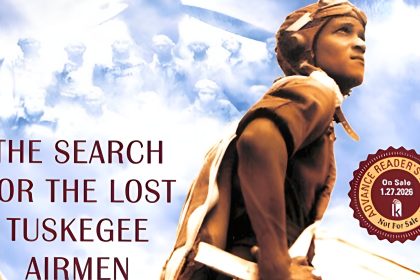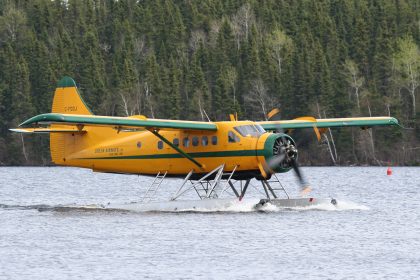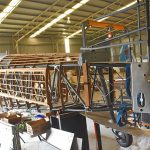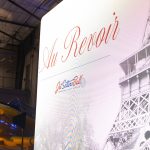By Adam Estes
Vintage Aviation News (VAN) is no stranger to the restoration team of the Air Zoo Aerospace and Science Museum of Kalamazoo, Michigan, or their ongoing projects. However, one aspect that often sets the Air Zoo apart from other museums is its partnership with the National Naval Aviation Museum (NNAM) in Pensacola, Florida in restoring World War II aircraft recovered from the depths of Lake Michigan. This second-largest of the Great Lakes has been a gold mine of sorts for the aviation community due to the nearly 200 aircraft that were claimed by the lake on training missions between 1943 and 1945. As these words are being written, the Air Zoo’s restoration team of volunteers and staff ranging from young students to retirees is applying the finishing touches on the latest Lake Michigan recovery, General Motors FM-2 Wildcat BuNo 57039.
This Wildcat rolled off Eastern Aircraft Division’s Linden, New Jersey plant, was accepted by the Navy on August 9, 1944, and delivered two days later. After a brief assignment with Composite Squadron 85 (VC-85) at Naval Air Station (NAS) Jacksonville, Florida, 57039 was transferred to the Navy’s Carrier Qualification Training Unit (CQTU) at NAS Glenview, near Chicago, Illinois on October 16. Pilots and aircraft of the CQTU would fly out from Glenview to practice carrier takeoffs and landings on the former paddle-wheel excursion liners turned aircraft carriers USS Wolverine (IX-64; formerly Seeandbee) and USS Sable (IX-81; formerly Greater Buffalo).
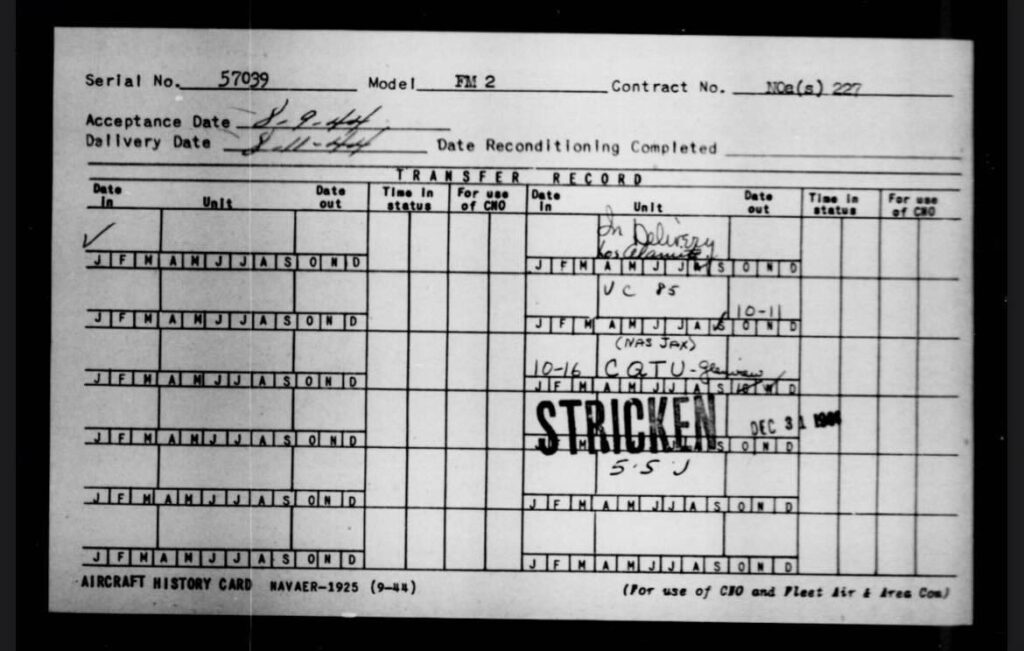
On the morning of December 28, 1944, Ensign (ENS) William E. Forbes released ‘039’s brakes and began his take-off roll down Sable’s deck when the Wildcat’s R-1820 quit just as the wheels left the deck. Immediately after the Wildcat hit the water, ENS Forbes escaped from the cockpit a split second before one of Sable’s paddlewheels crashed down on the Wildcat just aft of the cockpit. Though Forbes would later earn his wings and survive the war 57039 descended into the murky depths of Lake Michigan, where it would remain for 68 years.
In the 1990s, the aircraft salvage company A&T Recovery, founded by Allan Olson and Taras Lyssenko, used side-scanning sonar to locate lost aircraft on the bottom of Lake Michigan with the goal of recovering them on behalf of the NNAM for restoration and display. On one of these surveys, they located the wreck of 57039 laying upside-down in two sections exactly where it came to rest on that cold December day in 1944. However, neither A&T nor the NNAM have the funding to recover all of the aircraft at the bottom of Lake Michigan, and thus sought benefactors interested in funding their efforts. One such benefactor was businessman, pilot, and aircraft restorer Chuck Greenhill, who funded the recovery of ENS Forbes’ Wildcat.
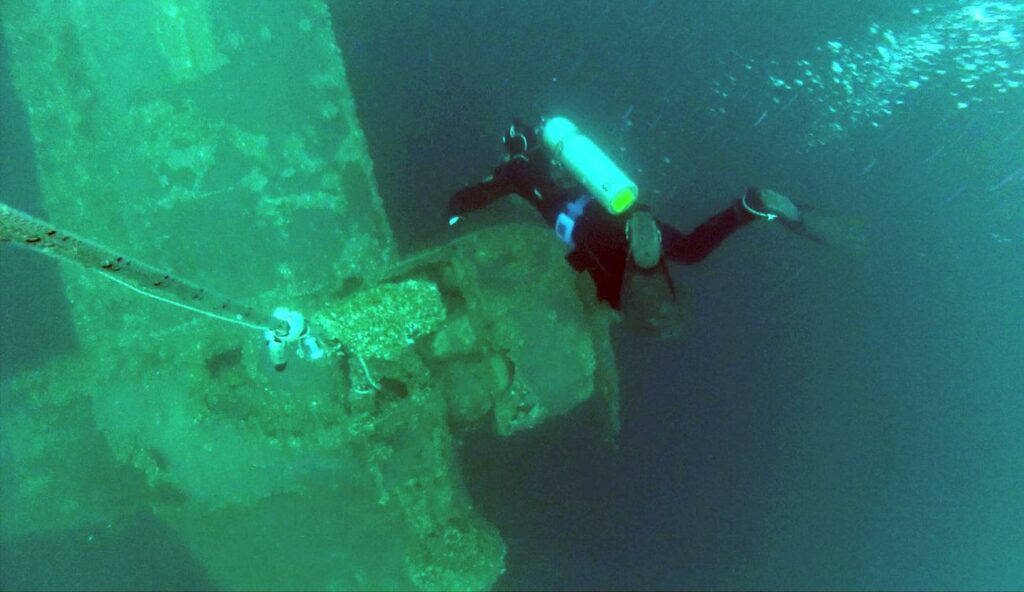
On December 7, 2012, after A&T crews secured and towed ‘039 to shore, they hoisted the two sections of the fighter onto the dock at Waukegan Harbor. The tail section was brought up first, followed by the forward section, which still had the wings, engine, and main landing gear attached and covered in mussels. Once the mussels were scraped off and the water in the aircraft drained, the wings were removed, and the disassembled aircraft was trucked from the harbor. The recovery of 57039 was also featured prominently in the 2016 documentary film Heroes on Deck: World War II on Lake Michigan (Heroes on Deck World War II documentary about aircraft carrier pilots).
At the time of its recovery, it was announced that the Wildcat would be restored for display at the Naval Air Station Glenview Museum, but in the meantime, the battered aircraft was kept in storage at Greenhill’s hangar up to the summer of 2013, when it was displayed unrestored at the Warbirds in Review portion of the 2013 EAA Airventure airshow in Oshkosh, Wisconsin.
A month after Oshkosh, on August 5, 2013, FM-2 57039 arrived at the Air Zoo Aerospace and Science Museum in Kalamazoo, Michigan for restoration on behalf of the National Naval Aviation Museum. After a public ceremony with senior museum officials and local media, the Wildcat was brought into the Air Zoo’s Flight Discovery Center, which acts not only as an annex to the museum for aircraft displays but also the restoration facilities. Initially, only a small team of volunteers worked on the fighter, as the museum had several other projects in the works, from another Lake Michigan recovery, SBD-2P BuNo 2173 which was restored for display at the Pearl Harbor Aviation Museum in Hawaii, to the F-117A Nighthawk 85-0817 “Shaba”, both of which have been previously covered here, but as the F-117 was finished and placed on display and the SBD-2P was sent to Hawaii, work on the FM-2 slowly began to kick up its pace.
During the restoration, the Air Zoo built a rotisserie-style assembly to rotate the Wildcat’s fuselage in order to more easily accommodate the metal and rivet-work. While this assembly did not come cheap, it had been designed to be adjustable for other projects as well, such as their other ongoing project, Douglas SBD-1 Dauntless, Bureau Number 1612, a fellow Lake Michigan recovery.
The biggest challenge facing the team was the fact that nearly the entire rear fuselage was destroyed by the paddles of USS Sable back in 1944, and the tail surfaces had only remained with the forward section through a single cable and electrical wire each. As such, the entire rear fuselage had to be re-fabricated from scratch using engineering drawings, while the surviving portion of the tail was used as reference material for a new section. Wooden frames also provided a point for new metal ribs and the aluminum skin to be held in place and riveted from the tail section to the rear of the cockpit section.
Typically, the warbird restoration community is dependent on the skills and expertise of retired mechanics and engineers. But the Air Zoo is ahead of the curve from other restoration departments in recruiting young local students to explore potential careers in the STEM fields (science, technology, engineering, and mathematics) and restore aircraft like 57039. The students have learned to work with everything from screwdrivers to rivet guns, all with an emphasis on safety while teaching the next generation of craftspeople and providing them with valuable experience.
[wbn_ads_google_three]
In July of 2022, 57039 received a major boost in funding from the National Medal of Honor Museum being constructed in Arlington, Texas, which entered into a partnership with the NNAM and the Air Zoo to complete the aircraft and have it displayed in their museum by its opening in the fall of 2024. Chris Cassidy, who was then-president and CEO of the National Medal of Honor Museum Foundation (NMOHMF) was cited as saying: “Eight World War II pilots earned the Medal of Honor while flying the Wildcat. No other single-engine, fixed-wing aircraft has more Medal of Honor actions associated with it than the Wildcat. The courage and sacrifice embodied by Medal of Honor pilots Henry Elrod, Butch O’Hare, Joe Bauer, Jefferson DeBlanc, Joe Foss, Bob Galer, John Smith, and James Swett will be further highlighted by having a version of their airplane on display within the National Medal of Honor Museum’s gallery.” While all eight Medal of Honor recipients who earned the nation’s highest honor for military valor in Wildcats did so in Grumman-built F4Fs as opposed to GM-built FM-1s or -2s, the -2 is the most widely available variant among surviving Wildcats, and with the funding for the project secure, 57039 began to take shape once more, day by day, week by week, month by month, and year by year.
In determining how the Wildcat would be repainted, the decision was made that it would represent a Wildcat flown in combat during the Battle of Leyte Gulf by Lt. Leopold “Leo” M. Ferko of VC-4, flying off the escort carrier USS White Plains (CVE-66). During the battle, which would see the introduction of the Special Attack Units (or kamikazes) among Japanese aviators, Ferko scored five aerial victories against Japanese fighters and bombers in three days, earning the title of ace, and the Distinguished Flying Cross (DFC).
In the leadup to the opening of the new Medal of Honor Museum in Texas, however, a change in leadership of the museum’s board determined that the Wildcat, which was now nearing completion, was no longer deemed necessary for their vision of the museum in relation to other exhibits. With the NMOHM backing out, the NNAM made an offer to the American Heritage Museum (AHM), an outgrowth of the Collings Foundation based in Hudson, Massachusetts. Rob Collings, president of the AHM and the Collings Foundation, agreed to help complete the final chapter of 57039’s restoration by making the AHM the Wildcat’s new home.
The AHM already has ties with both the Air Zoo and the NNAM, as they currently have an SBD-5 Dauntless BuNo 36177 on loan to them from Pensacola. That Dauntless is another Lake Michigan recovery, having ditched due to engine failure on approach to USS Wolverine on January 19, 1944, and was previously loaned to the Pearl Harbor Aviation Museum until 2021, when it was exchanged for the SBD-2P restored at Kalamazoo, BuNo 2173, as the latter had been stationed at Pearl Harbor prior to its own plunge into Lake Michigan in 1943.
With the FM-2 receiving its last coats of paint and markings, the Wildcat that spent 68 years on the bottom of Lake Michigan and 10 and a half years and over 50,000 work hours under restoration at the Air Zoo will be set to arrive at the AHM for a special unveiling ceremony during the museum’s upcoming WWII in the Pacific Re-Enactment Weekend on July 13th & 14th.
During an interview with Vintage Aviation News publisher Moreno Aguiari, Rob Collings, President of the American Heritage Museum outlines the AHM’s vision for the display of FM-2 57039:
“We’ll have a couple of different storylines throughout it. We’ll have the P-40B and reenactors talking about the beginning of the war in the Philippines and the beginning of the war in the Pacific. Then, we’ll take it on through to Saipan, where we’ll have an airfield with the Wildcat, the Hellcat, TBM, SBD, planes like that on display, and a little Pacific reenactment that’s going on. That’ll be the first event we have here. From there, it’ll be on display in our hangar, which we rotate aircraft between the hangar and the main museum area, to keep it fresh. Currently, the P-40B, the SBD, and the Hellcat are over here, but we have a couple other airplanes that are coming in, and so we’ll be rotating that around. Then, ultimately, we’re planning on a new expansion, which is a fairly major expansion to have all the aircraft here under one roof and the Wildcat will be a key element to that.”
Collings continued… “I’ve had a chance to see the aircraft a couple of times. I was out last summer to visit with them, and then just this week, now that the paint’s on, it looks absolutely stunning. What my takeaway is, that there is a group that they are so lucky to have out there, these volunteers that are doing just such a remarkable job with these restorations. One of the guys is 96 years old, and he still drives there. He was showing me the engine of this SBD-1 that they’re doing right now that he rebuilt, and it’s absolutely gorgeous. You can’t underestimate the passion that these volunteers have, to do amazing work. So far, they put 51,000 hours into the restoration of this Wildcat, and it shows. It’s really well done, and nice. But I think it’s a tremendous service that Kalamazoo and that cadre of volunteers has done for the entire aviation community. You look at, they have an SBD in Hawaii that they restored. They have all the planes there, the Wildcat coming here. All the work they’ve done over the years in partnership with the Navy has been phenomenal, and it’s brought a lot of almost extinct types, like SBDs, if you go back a few years ago, to all the lake recoveries, and now that they’re dispersed around the country where people can see them, it’s fantastic.”</
[wbn_ads_google_four]
Although 57039 will soon depart from the Air Zoo for Hudson, that does not mean that the museum will not have an example of the venerable Wildcat. Indeed, the museum’s co-founder Preston “Pete” Parish acquired another FM-2, BuNo 86581, in 1971, while 57039 was still at the bottom of Lake Michigan, and was flown at numerous airshows throughout the East Coast and Great Lakes region during the 1980s and 1990s. This Wildcat is in the permanent collection of the Air Zoo and will continue to be on display after 57039 heads to its new home.
Additionally, the restoration volunteers will not be resting on their hard-won laurels, as they continue to work on another aircraft recovered from Lake Michigan, SBD-1 BuNo 1612, which we will continue to cover as it nears completion and a possible new home, depending on where Pensacola and the Air Zoo see fit to send it.
To support the efforts of the Air Zoo, the American Heritage Museum, and the National Naval Aviation Museum, visit their respective websites: Air Zoo Aerospace & Science Museum | Kalamazoo, MI, The American Heritage Museum, and Homepage – NNAM (navalaviationmuseum.org).
Special thanks to Greg Ward of the Air Zoo and Rob Collings of the American Heritage Museum in contributing for this article.
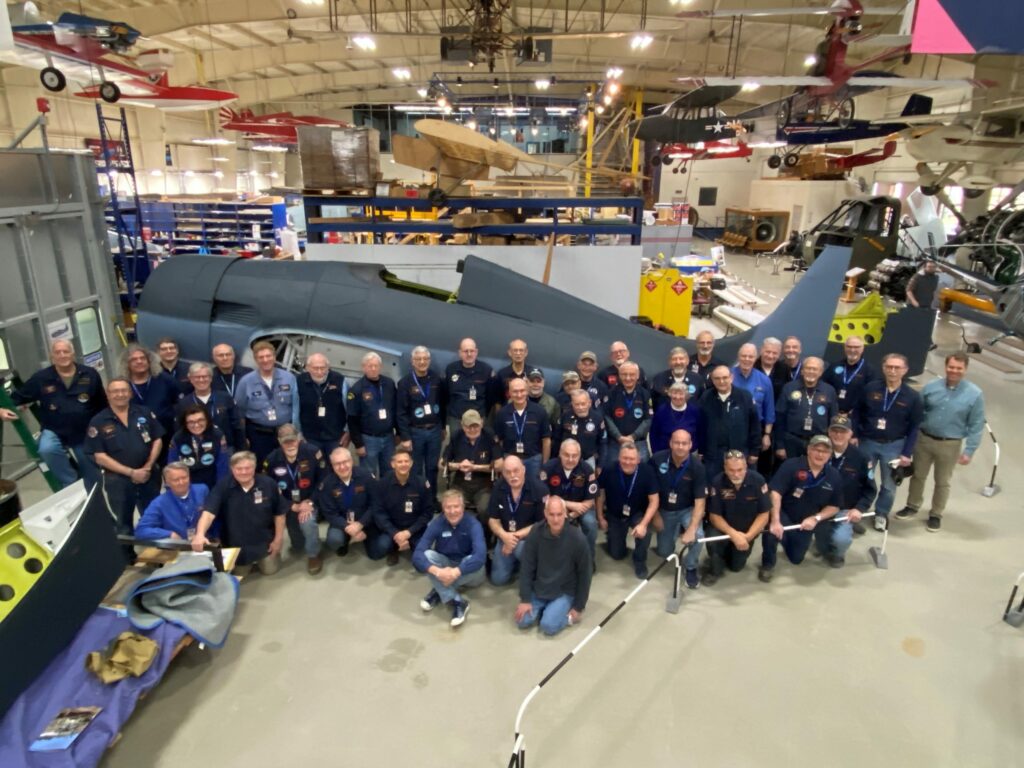







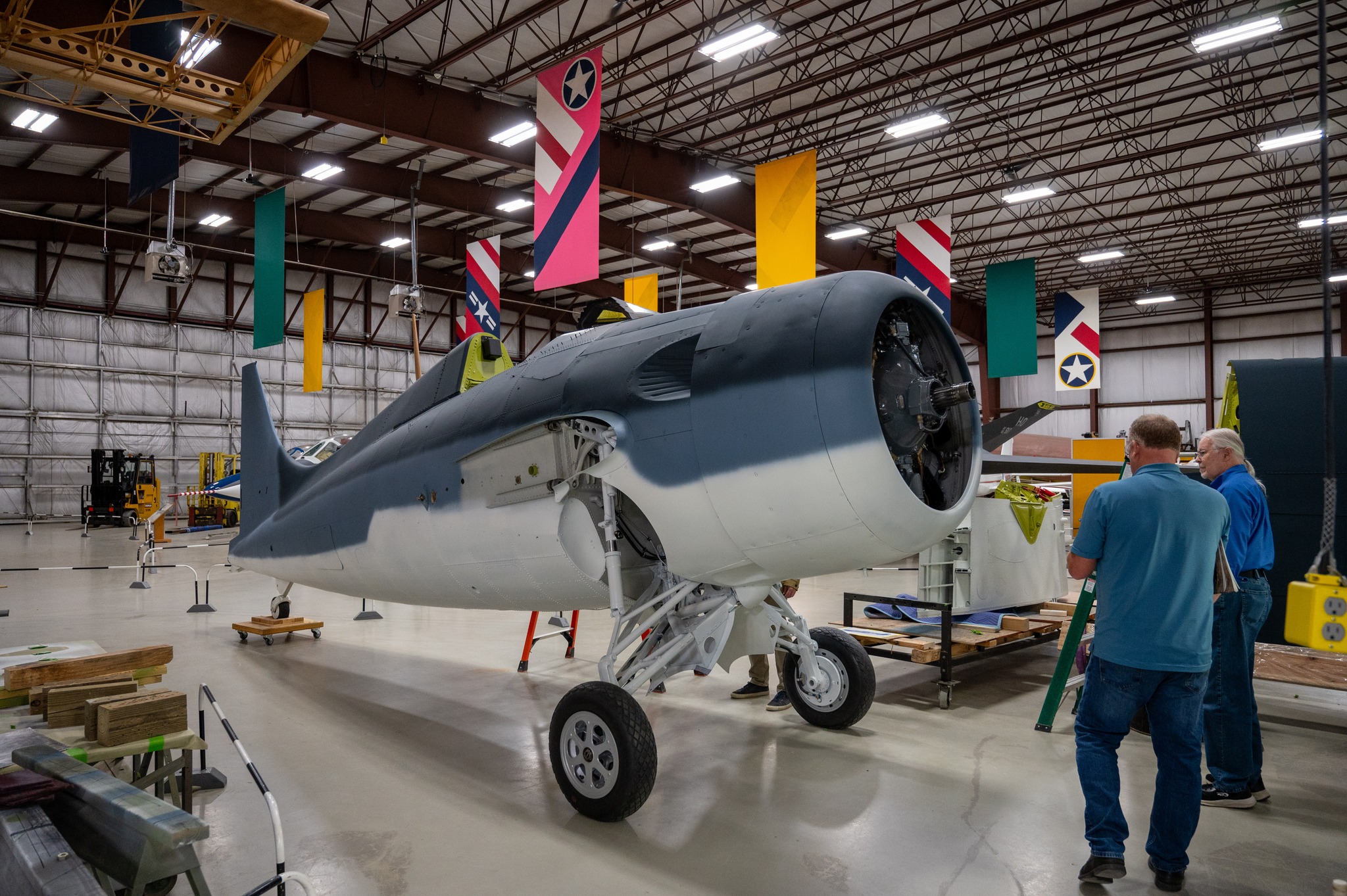

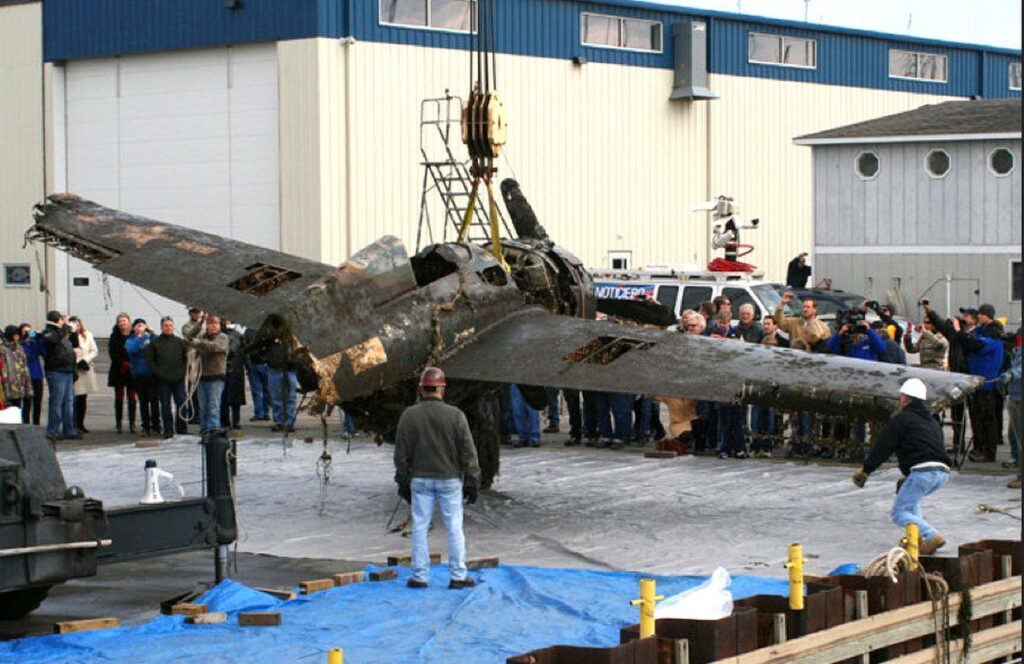
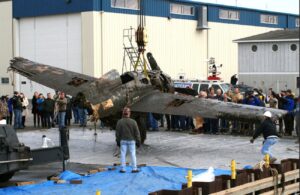
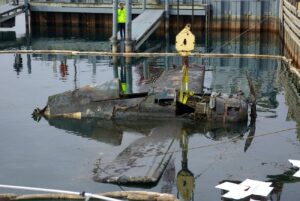
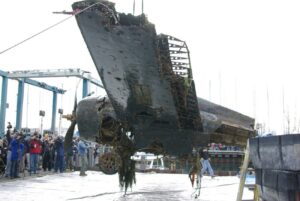
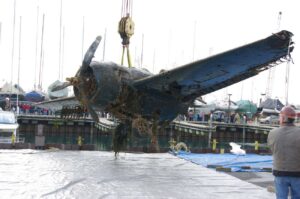
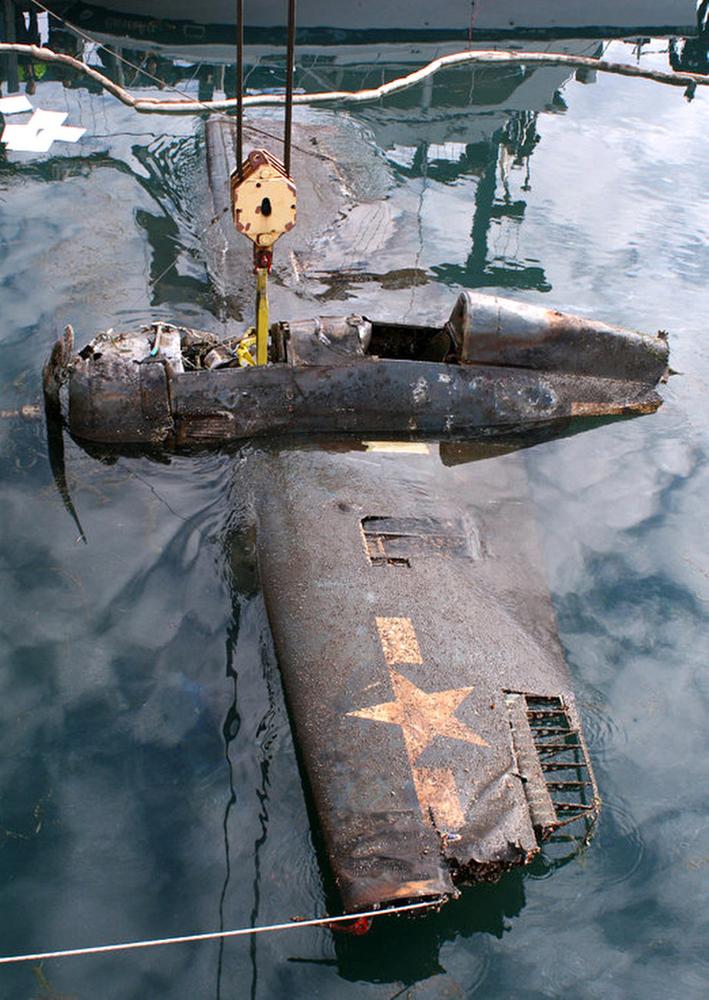
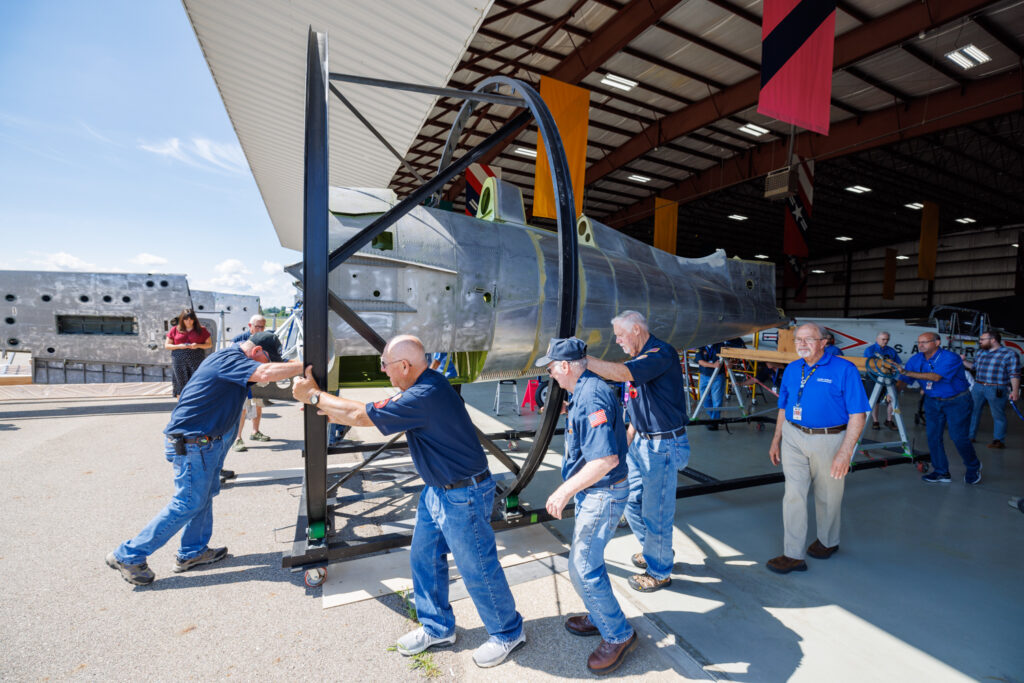
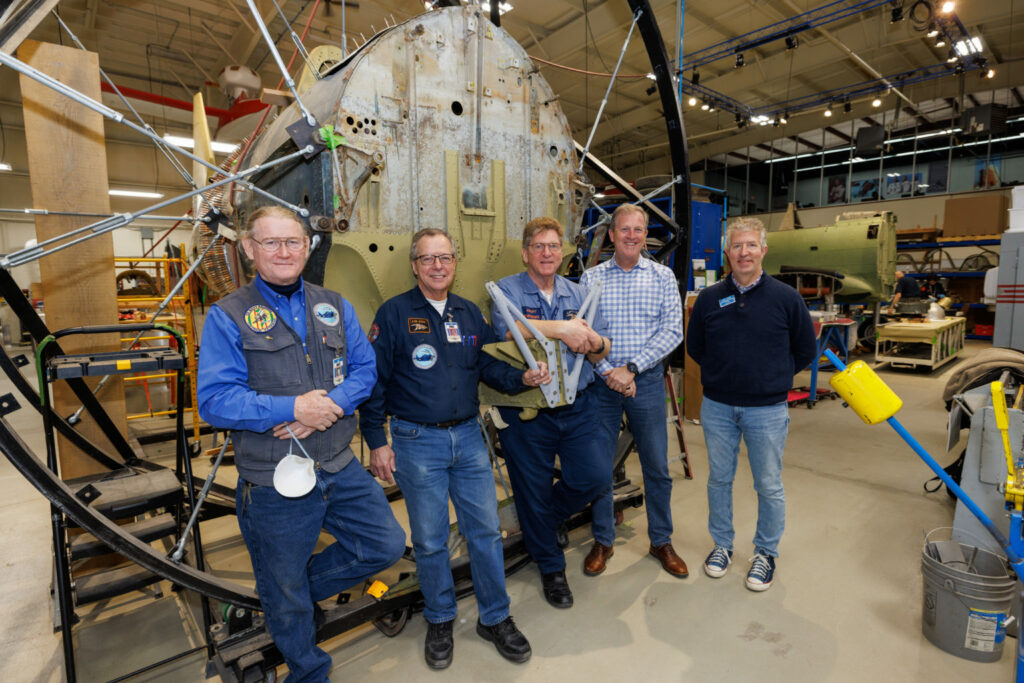
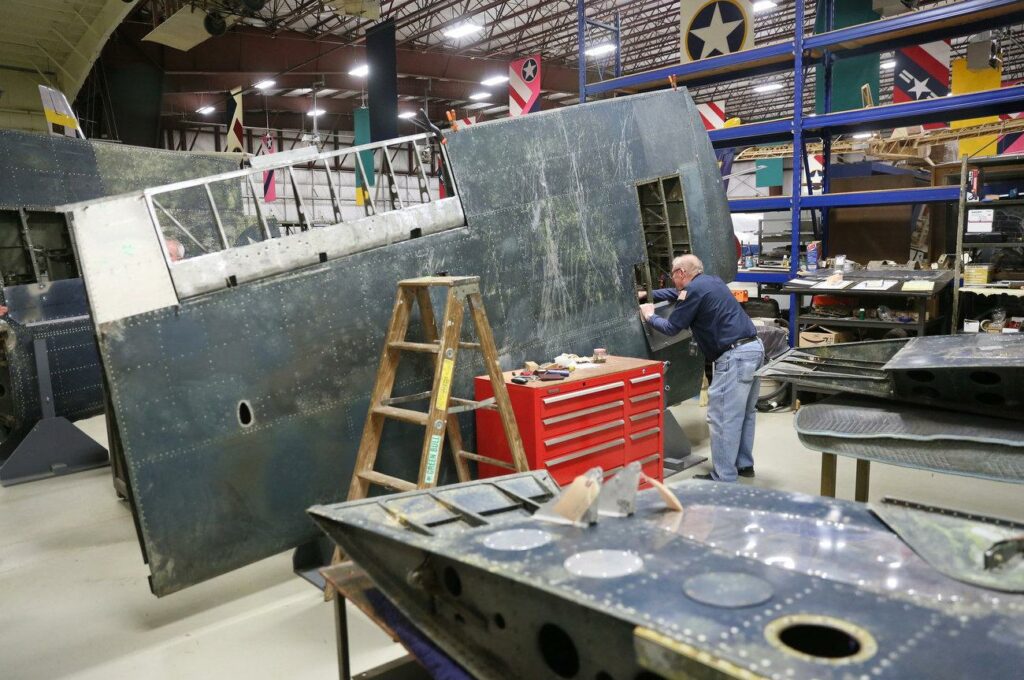
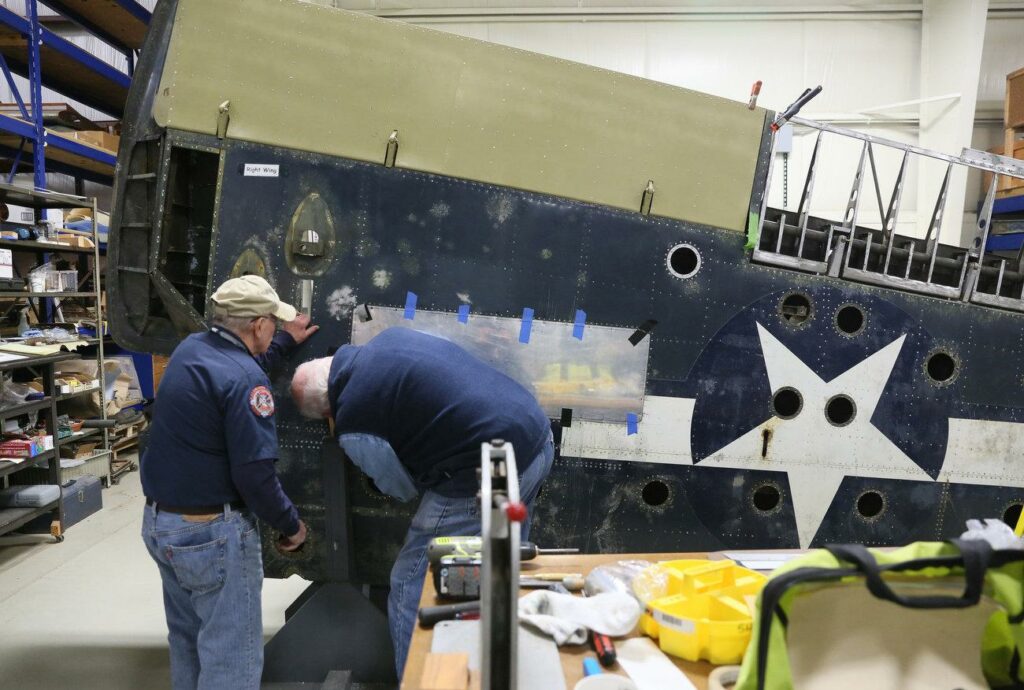
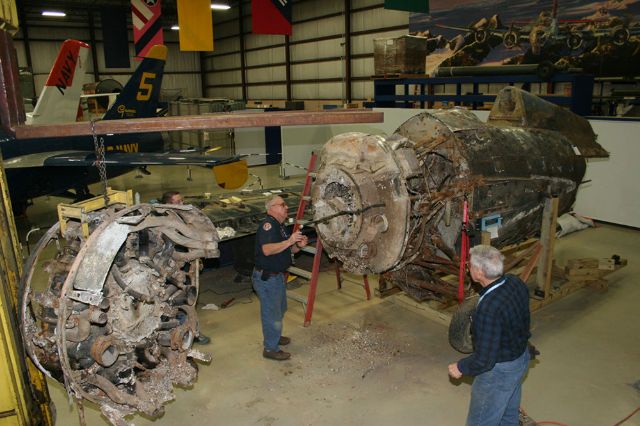
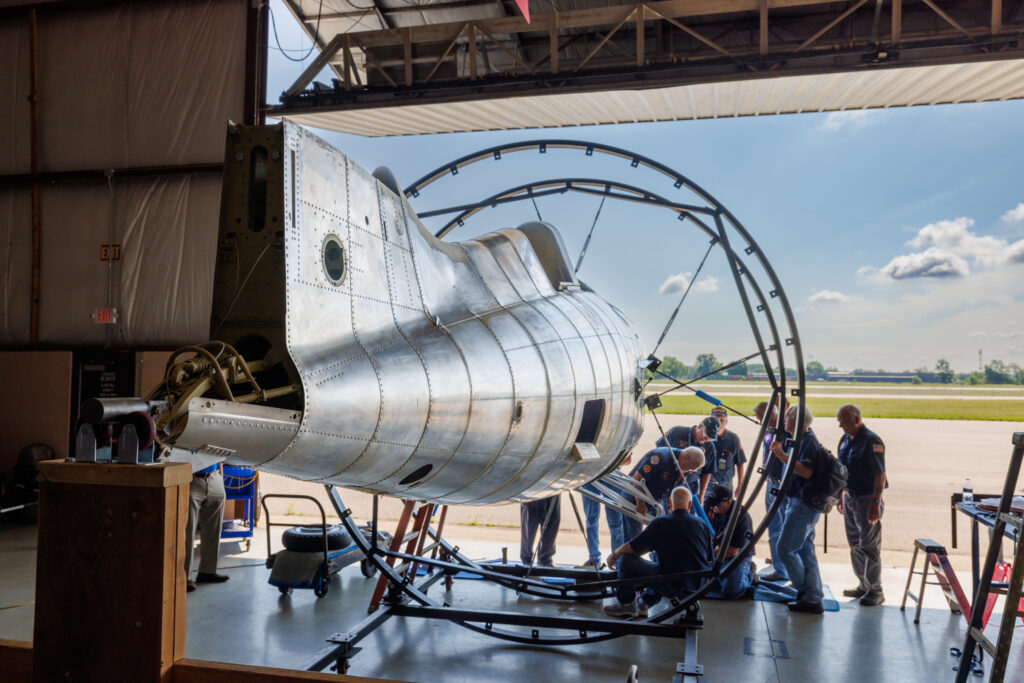
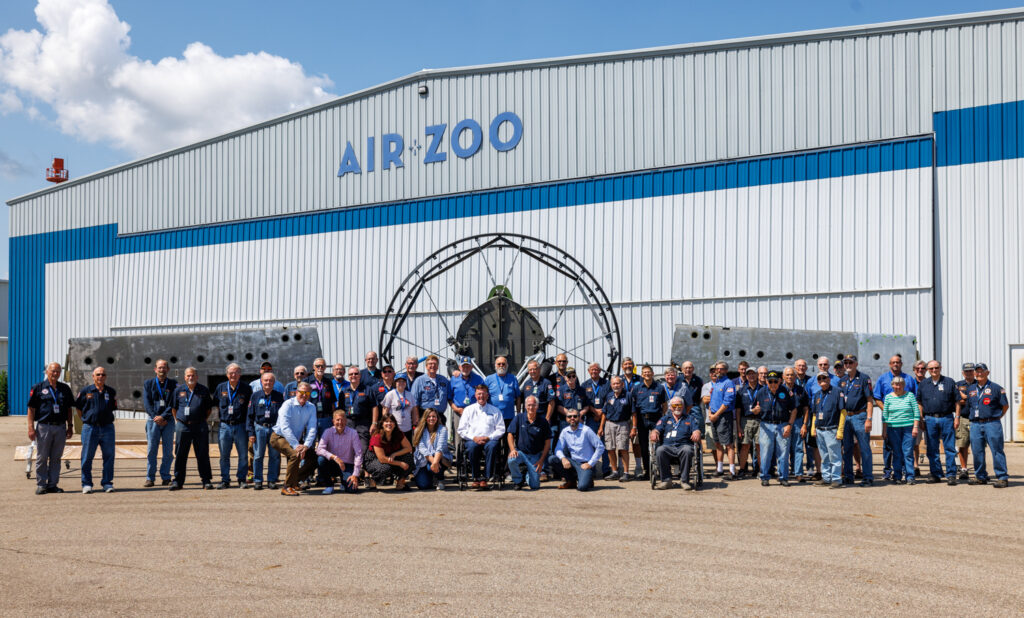
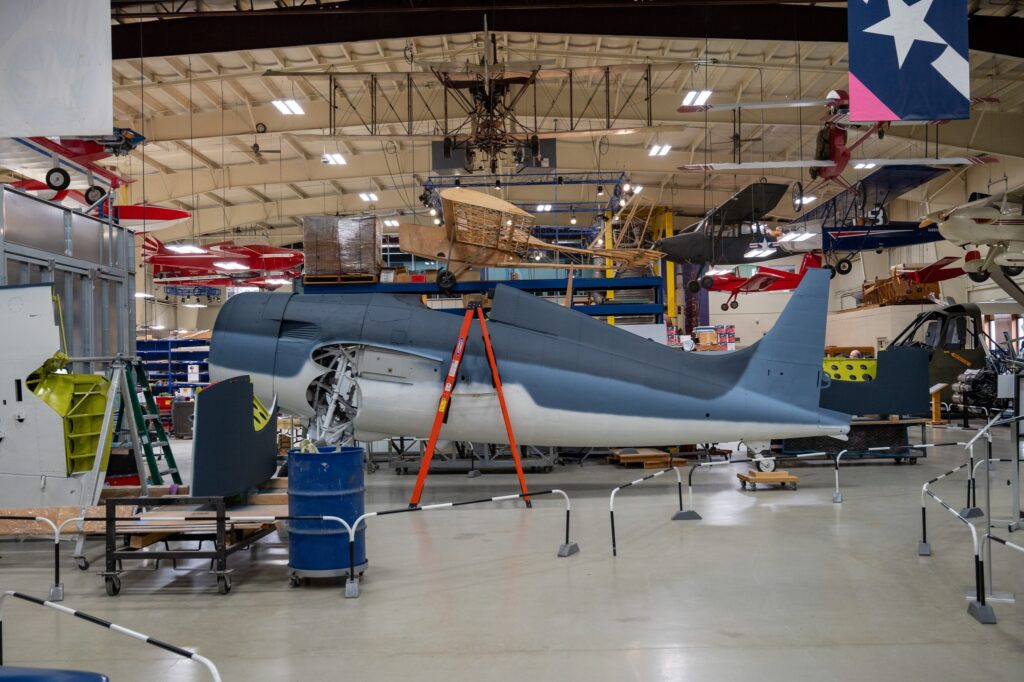
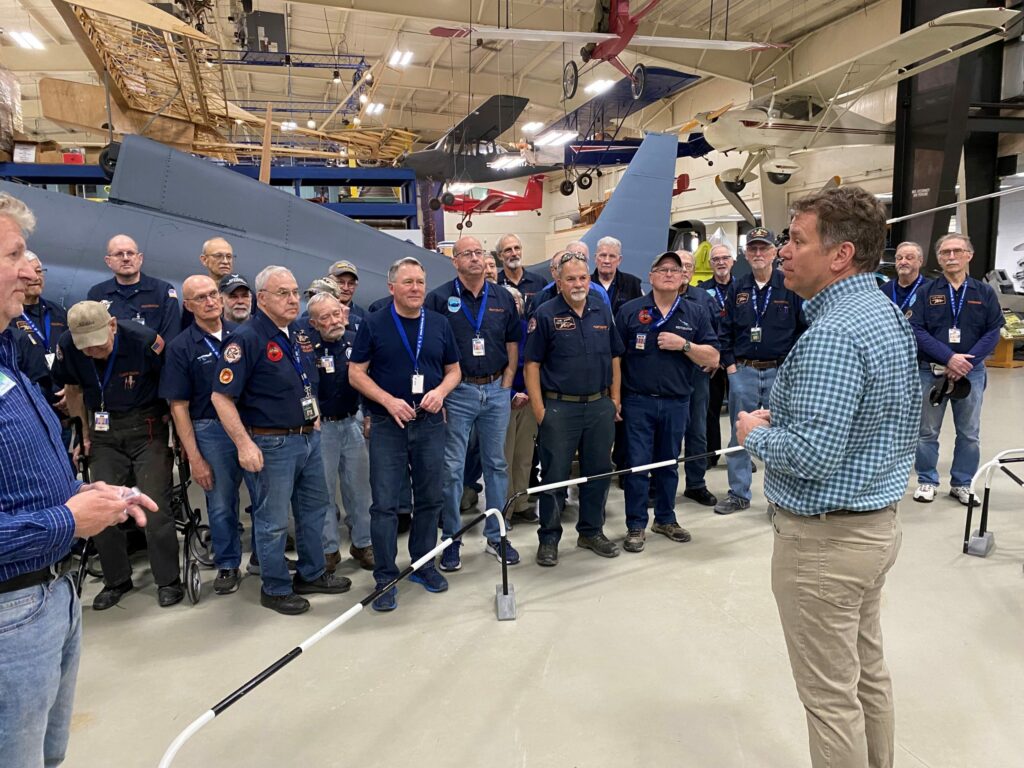

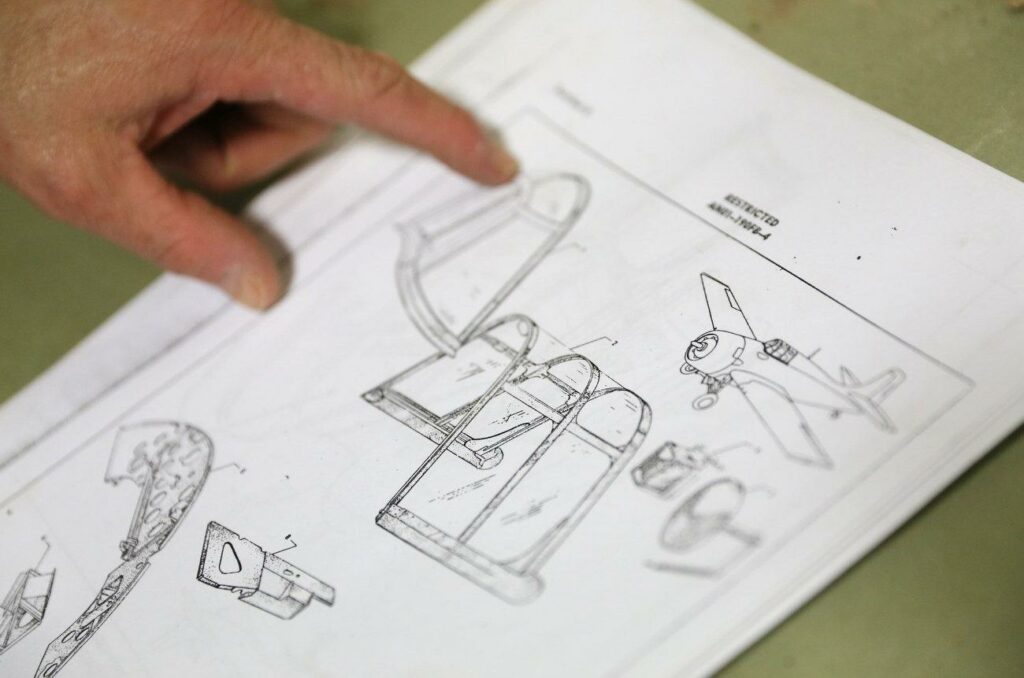
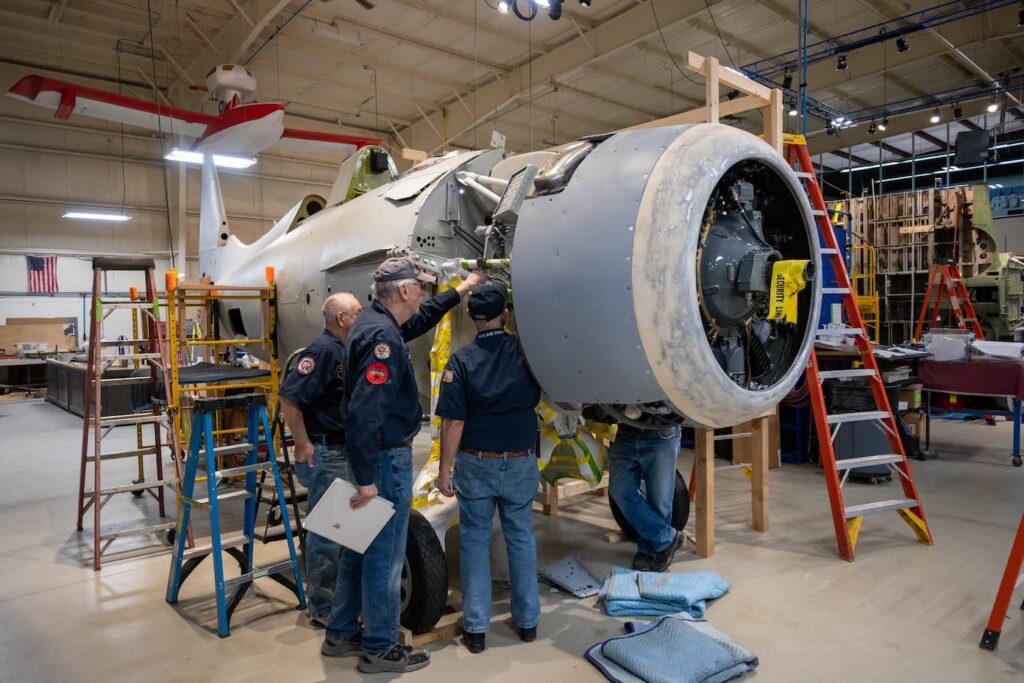
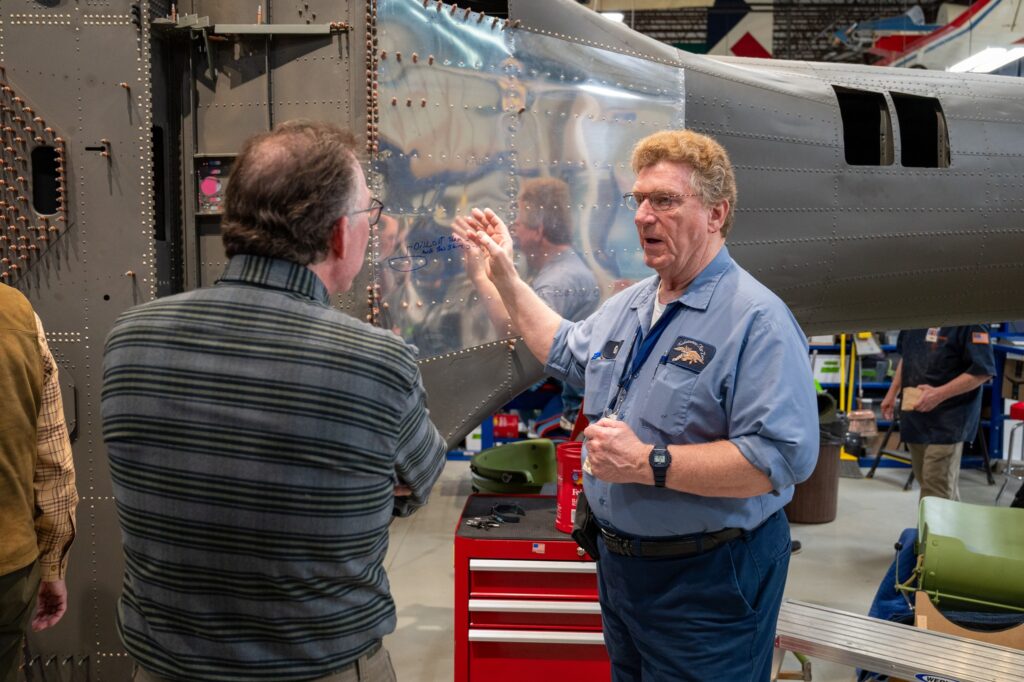
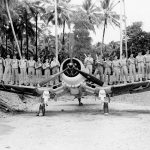
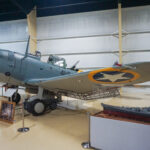
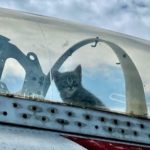
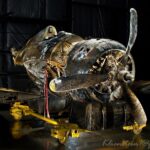

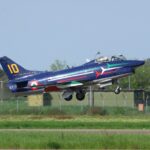
![Old Rhinebeck's Spirit Of The Aerodrome Gala and Iron Maiden Fokker Fabric Raffle 33 Iron Maiden's Bruce Dickinson in the Old Rhinebeck Fokker Dr.I replica compares notes with ORA pilot Dave King. [Photo via Old Rhinebeck Aerodrome]](https://vintageaviationnews.com/wp-content/uploads/Iron-Maiden-Bruce-Dickinson_Fokker_Old-Rhinebeck-150x150.jpeg)



